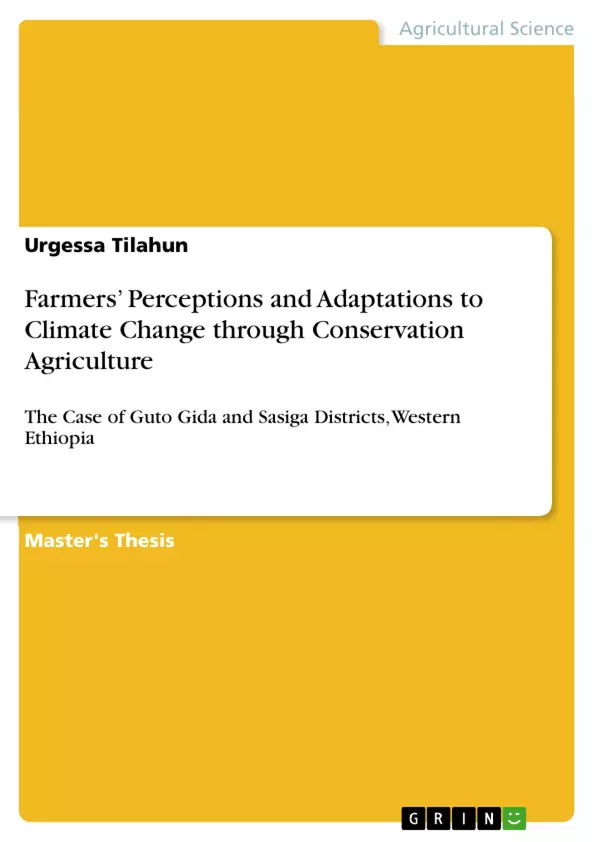Ethiopia, one of the developing countries, is facing serious natural resource degradation problems. The main objective of this study was to examine the farmer’s perceptions and adaptation to climate change through conservation agriculture. The data used for the study were collected from 142 farm households heads drawn from five kebeles. Primary data and secondary data were used. In addition to descriptive statistics, Heckman two stage sample selection model was employed to examine farmer’s perceptions and adaptations of climate change. Farmers level of education, household nonfarm income, livestock ownership, extension on crop and livestock, households’ credit accessibility, perception of increase in temperature and perception of decrease in precipitation significantly affect the adaptation to climate change. Similarly, farmers’ perception of climate change was affected significantly by information on climate, farmer to farmer extension, local agro -ecology, number of relatives in development group and perception of change in duration of season. A binary logit model was employed for farmers’ participation in conservation agriculture shows education level, number of active family labour and main employment of farmers were significant variables in determining participation in conservation agriculture
Inhaltsverzeichnis (Table of Contents)
- Acknowledgement
- List of Acronyms
- Table of Contents
- List of Tables
- Abstract
- Introduction
- Materials and Methods
- Result and Discussion
- Conservation Agriculture as Adaptation Strategy to Climate Change
- Results of the Econometric Model
- Farmers' Perception and Adaptation to Climate Change
- Farmers' Participation in Conservation Agriculture
- Climate Change Adaptation Measures and Causes of Non Adaptation
- Conclusion
- References
- Appendix
Zielsetzung und Themenschwerpunkte (Objectives and Key Themes)
This study investigates farmers' perceptions and adaptations to climate change through Conservation Agriculture (CA) in Guto Gida and Sasiga Districts, Western Ethiopia. The study aims to understand the factors influencing farmers' participation in CA practices and how these practices contribute to climate change adaptation.- Farmers' perceptions of climate change and its impacts
- The role of CA as an adaptation strategy to climate change
- Factors influencing farmers' participation in CA practices
- The effectiveness of CA in mitigating the impacts of climate change
- Challenges and opportunities for promoting CA adoption among farmers
Zusammenfassung der Kapitel (Chapter Summaries)
- The introduction lays out the background of the study, highlighting the importance of climate change adaptation and the role of CA in this context. It establishes the research question and the objectives of the study.
- The Materials and Methods chapter details the study area, sampling methods, data collection techniques, and analytical methods employed. It also explains the econometric models used in the analysis.
- The Result and Discussion chapter presents the findings of the study. It examines farmers' perceptions of climate change, their adaptation strategies, and the factors influencing their participation in CA practices. The chapter also analyzes the relationship between CA practices and climate change adaptation.
Schlüsselwörter (Keywords)
This study explores key themes such as climate change adaptation, conservation agriculture, farmers' perceptions, socioeconomic factors, and econometric modeling. The research delves into the effectiveness of CA as an adaptation strategy, examining the impacts of climate change on agricultural practices and the role of farmers in mitigating these impacts.- Arbeit zitieren
- Urgessa Tilahun (Autor:in), 2013, Farmers’ Perceptions and Adaptations to Climate Change through Conservation Agriculture, München, GRIN Verlag, https://www.grin.com/document/277938



